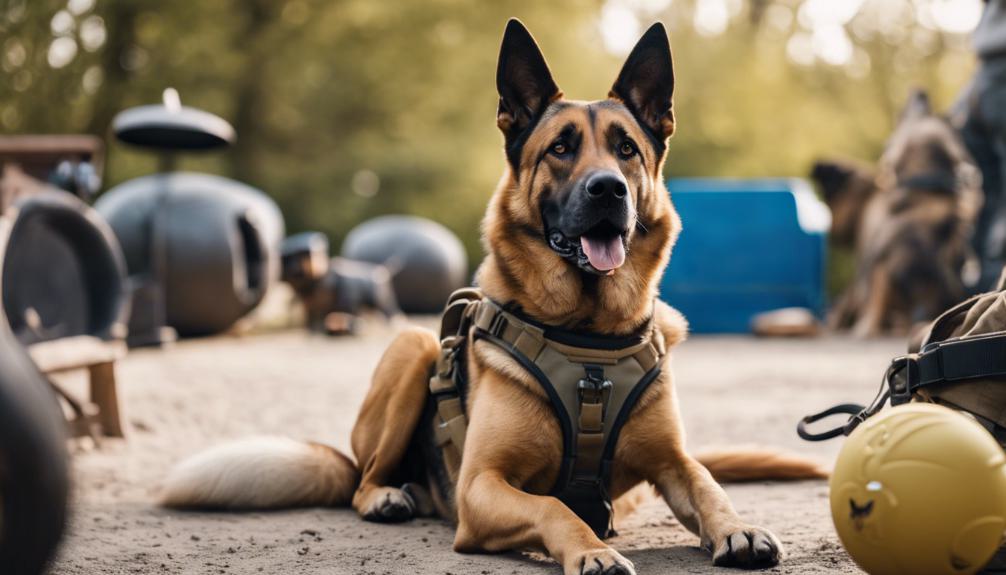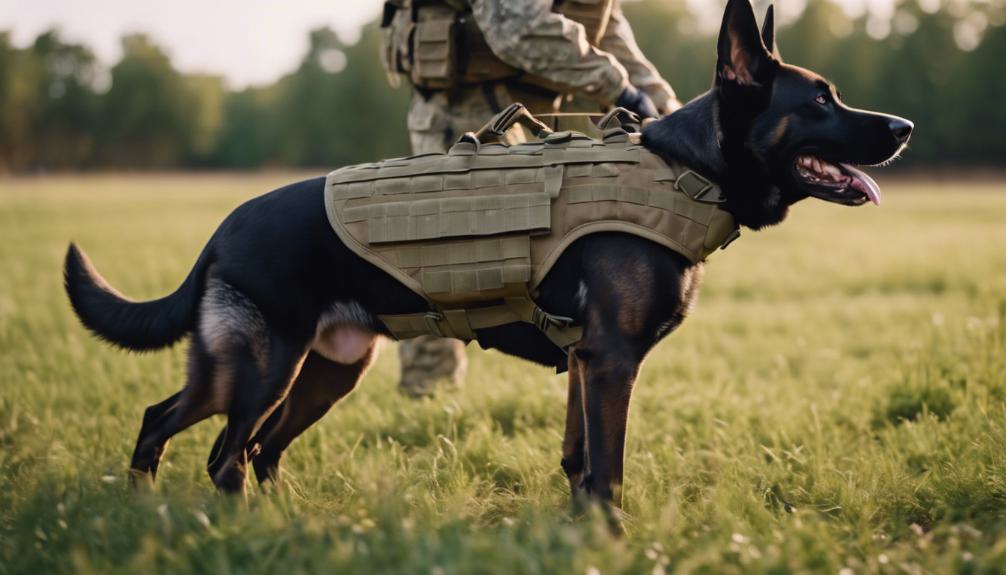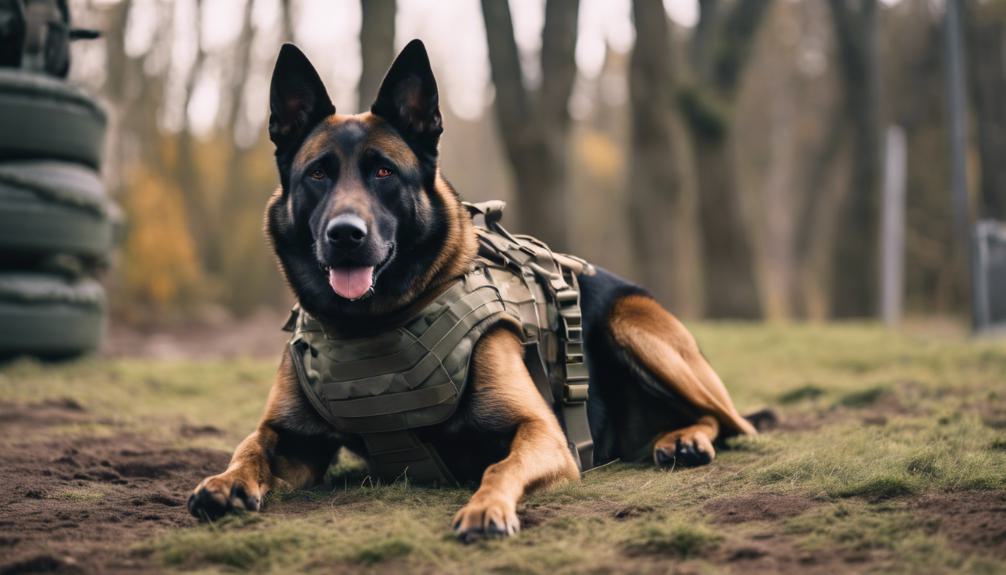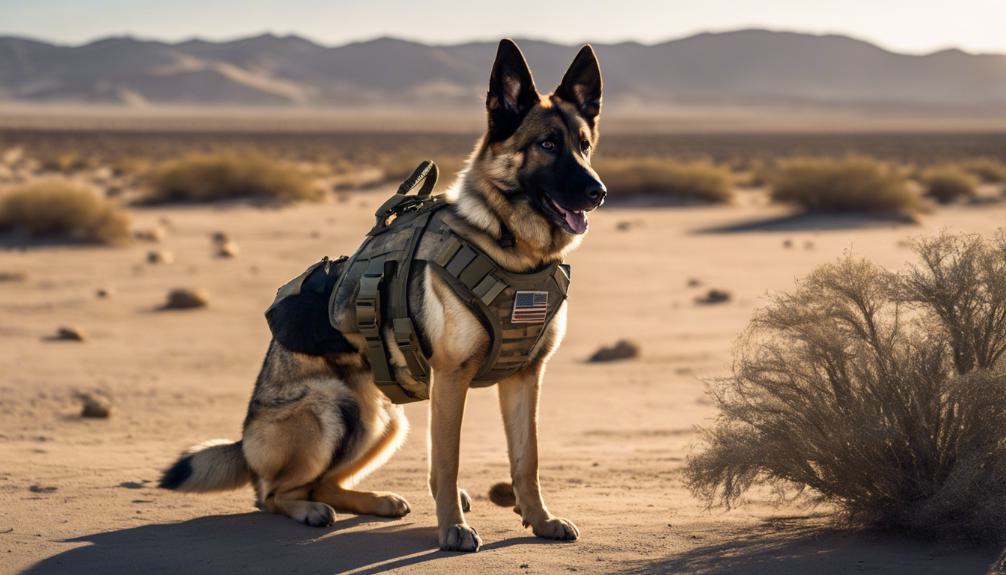How to Train a War Dog? Unveiling the Secrets for Top Performance
To effectively train a war dog, understand their breed traits for better results in obedience and teamwork. Consistent training sessions build trust and respect, using positive reinforcement like treats and praise. Task-specific training prepares them for responsibilities like sentry duty and mine detection. Regular training in designated areas helps reinforce commands and behaviors. Mental stimulation through puzzles and exercise keeps them sharp. Focus on discipline and reliability through obedience commands and specialized tasks. Strengthen the bond with your dog to enhance obedience. This foundation sets the stage for a successful war dog training journey.
Breed Understanding and Characteristics
When choosing a dog breed for military purposes, consider their specific traits and capabilities.
The Belgian Malinois is often used in military roles because of their high intelligence, agility, and loyalty.
These characteristics are crucial for roles that demand obedience and teamwork with handlers.
Knowing the traits of different breeds helps maximize the effectiveness of military working dogs.
Building Trust and Respect
To develop a solid relationship with a war dog, focus on trust and respect by using consistent training methods and positive reinforcement.
- Consistent Training: Regular training sessions are crucial as they help to establish and maintain trust and respect between you and the dog.
- Positive Reinforcement: Encouraging good behavior with rewards like treats and praise effectively strengthens your bond. Research supports that positive reinforcement is one of the most powerful methods for training dogs (American Kennel Club).
- Quality Time Together: Allocating time to spend with the war dog not only deepens your bond but also improves your mutual understanding. This practice is supported by studies showing that spending time together increases a dog’s responsiveness and attachment to its handler (Journal of Veterinary Behavior).
Positive Reinforcement Techniques

Using positive reinforcement techniques effectively improves the training and performance of military dogs by consistently rewarding their desired behaviors right after they occur. In dog training, positive reinforcement includes using praise, attention, play, or treats to acknowledge good behavior. This method not only improves learning and performance but also strengthens the bond between handlers and their dogs, fostering trust and cooperation.
| Benefits of Positive Reinforcement Techniques |
|---|
| Improves training and performance |
| Strengthens bond between handlers and dogs |
| Fosters trust and cooperation |
Positive reinforcement has been widely studied and is supported by research in the field of animal behavior. Studies consistently show that animals, including dogs, are more likely to repeat behaviors that are rewarded. This approach not only leads to more effective training outcomes but also contributes to a healthier psychological state for the animal, reducing instances of fear and aggression.
Task-Specific Training
Training war dogs involves specific methods tailored to their future roles in military operations. Here’s a breakdown of the essential training categories:
- Sentry Duty: War dogs undergo rigorous training to become adept at alerting their handlers to any unusual or potentially dangerous activities. They’re taught to recognize and respond to threats, enhancing security measures in military environments.
- Mine Detection: These dogs are trained to identify the scent of explosives, which is crucial for ensuring the safety of troops by detecting hidden mines or IEDs (Improvised Explosive Devices). Their ability to sniff out danger before humans can detect it saves countless lives.
- Controlled Aggressiveness: Dogs are trained to exhibit aggression on command, making them effective in neutralizing threats. This controlled behavior is essential for operations where force might be necessary, but must be precisely managed to avoid unintended consequences.
These specialized training programs are designed to maximize the capabilities of war dogs, making them invaluable assets in military operations. Each skill set is developed through proven training techniques based on historical successes and empirical studies, ensuring these animals perform effectively in their roles.
Regular Training Sessions

Regular training sessions are crucial for maintaining and improving the performance of war dogs. A designated training area provides the necessary space to develop obedience and agility.
Training involves obstacle courses that require dogs and their handlers to cooperate effectively. It’s important to train dogs consistently to reinforce their learning of commands and behaviors. This consistency builds a strong connection between the dogs and their handlers, which is key for effective teamwork.
Regular practice is essential to keep war dogs performing at their best.
Mental Stimulation and Exercise
To improve the performance and health of military dogs, it’s crucial to engage them in regular mental stimulation and exercise. Below are effective strategies to accomplish this in a training environment:
- Challenge your dog with tasks and puzzles that require problem-solving skills.
- Combine scent work, agility training, and obedience drills into their routine.
- Maintain a consistent exercise schedule to support both physical and mental well-being.
These methods help keep the dogs engaged and in optimal condition for their roles. Studies and practical experience underscore the importance of such practices in preventing boredom and promoting a productive mindset in working dogs.
Developing Discipline and Reliability

Training military working dogs to be disciplined and reliable requires consistent methods and clear communication. Handlers need to reinforce behaviors that ensure the dogs perform well in various environments.
The training regimen includes obedience commands, specialized tasks, and enhancing situational awareness, which are crucial for maintaining discipline.
The relationship between handlers and dogs is critical; a strong bond leads to better obedience and effectiveness in missions.
This approach, based on established military training protocols and canine behavior studies, ensures that dogs meet the demands of their roles efficiently.
Frequently Asked Questions
How Long Does It Take to Train a War Dog?
Training a war dog usually takes 4 to 8 months. You must commit to intensive daily sessions lasting hours to succeed. Consistency and practice are crucial. Certain tasks like sentry duty or mine detection may need extra time.
How Do You Train a Soldier Dog?
You train a soldier dog through consistent practice, positive reinforcement, and specialized instruction. Building trust and communication is key. Equip them with necessary gear and skills tailored to their role. Regular training sessions guarantee readiness.
What Is the Best Breed for War Dogs?
For war dogs, breeds like Belgian Malinois, German Shepherds, and Dutch Shepherds are commonly chosen. Their intelligence, agility, and trainability make them valuable assets in military operations. Each breed has unique strengths for specific roles.
What Commands Do Military Dogs Learn?
You should know that military dogs learn fundamental commands like SIT, DOWN, HEEL, and STAY for obedience and control. They respond to verbal and visual cues, so consistency in commands is key for effective training.
Conclusion
To effectively train a war dog, start by understanding the specific breed’s traits. Build trust through consistent, positive interactions. Use positive reinforcement to encourage good behavior. Focus on training for specific tasks the dog must perform.
Keep training sessions regular and short to maintain the dog’s attention. Provide mental challenges and physical exercise to keep the dog sharp and fit. Discipline should be firm but fair. Ensure the dog’s training is thorough to rely on their skills in critical situations.
Always be patient and consistent; this helps strengthen your bond and makes your dog a reliable partner. Remember, the right training sets your war dog up for success in their vital role.

